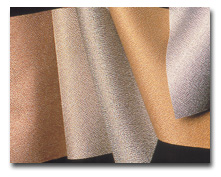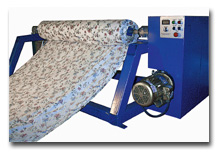T
he H.J. Heinz Co. has just introduced its Stellar Blue ketchup to the market. The company
enjoyed tremendous success with Blastin’ Green ketchup last year and feels the blue line will boost
its overall sales for 2003. Simultaneously, Jim Cantalupo, the new CEO at McDonald’s Corp.,
released the specifics of his turnaround strategy for the burger chain. In essence, the new
marketing effort will concentrate on “doing fewer things but doing them better.”
Perhaps there is a valuable lesson here for yarn manufacturers. As a number of firms are
struggling for survival, the time may be right to adapt new business models that emphasize
technology, niche markets and innovative value-added products. As one spinner said, “We are
modifying a lot of our existing equipment to enable us to make higher-value effect yarns.”
Fashion designers are looking at effect yarns as a viable way to get a more natural
appearance in knitted or woven fabrics. In fact, effect yarns are now a fashion trend from denim to
T-shirts. Devices are available to allow the conversion of existing ring spinning and open-end
equipment. Program-controlled drafting systems allow the production of slub, multicount, and
multitwist effect yarns. This type of diversification and flexibility in product may be the
industry’s version of blue ketchup and better burgers.
Recession Worries Grow
Most economists felt that the major obstacle to economic recovery was the war in Iraq. Despite
the news that Saddam Hussein’s government has toppled, Wall Street continues to stumble lower.
Analysts have already pushed back their forecasts of economic recovery to the second half of this
year. The CEO of a major textile firm said, “Investors have shifted their attention from the war to
the first-quarter earnings report.”
Gross domestic product gains declined to 1.4 percent for the fourth quarter of 2002. Many
economists are predicting little change for the first quarter of 2003. In fact, some feel the final
results may show the economy actually shrank during this period — initial signs of a slide back
into recession.
The most critical element seems to be job losses. The economy lost another 108,000 jobs in
March. The 465,000 jobs that have disappeared over the first quarter have caused the Federal
Reserve Board to put together an Emergency Economic Rescue Plan. According to Fed Chairman Alan
Greenspan, the plan may include the purchase of long-term securities in an effort to stabilize
long-term interest rates.
The Fed has indicated its willingness to lend money directly to commercial banks and has
committed to maintaining the Federal Funds Rate at levels necessary to produce a sustainable
economic recovery. In fact, the Fed has indicated that the Federal Funds Rate would be held at a
lower level over a long period if the rate is moved below the current 41-year low of 1.25 percent.
The CEO of a large textile firm reacted to the proposal by saying, “The Fed is trying to bolster
confidence. They are trying to eliminate worries about sudden jumps in long-term and short-term
rates. Hope the plan works.”
New Optimism Over Trade Issues
Grant Aldonas, under secretary of international trade administration with the US Department of
Commerce, recently announced a “ safeguard provision” for dealing with the flood of imports from
China. The safeguard — which will remain in effect until December 31, 2008 — gives the United
States the right to impose quotas on certain textile and apparel products that were previously
removed from quotas as part of China’s accession to the World Trade Organization.
The biggest impact of the new safeguard affecting yarn manufacturers will be in the area of
knit fabrics. In 2002, China surged ahead to become the fifth-largest exporter of knits to the
United States, up from a position of 26th in 2001. Overall, this is still a very small piece of the
pie, since total textile imports from China are approaching 5 billion square meters, valued in
excess of $8.7 billion. A textile executive stressed, “This should have happened sooner. Everything
going forward will be based on the current level of imports.” A good point, since China’s textile
and apparel exports rose 36.6 percent in December alone!
May 2003
 Pillowtex
Pillowtex





